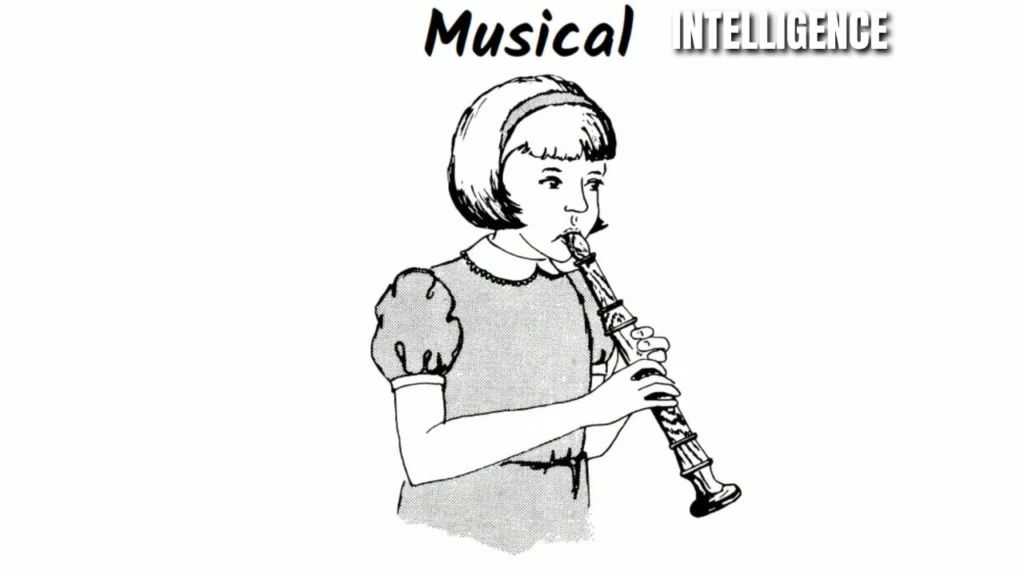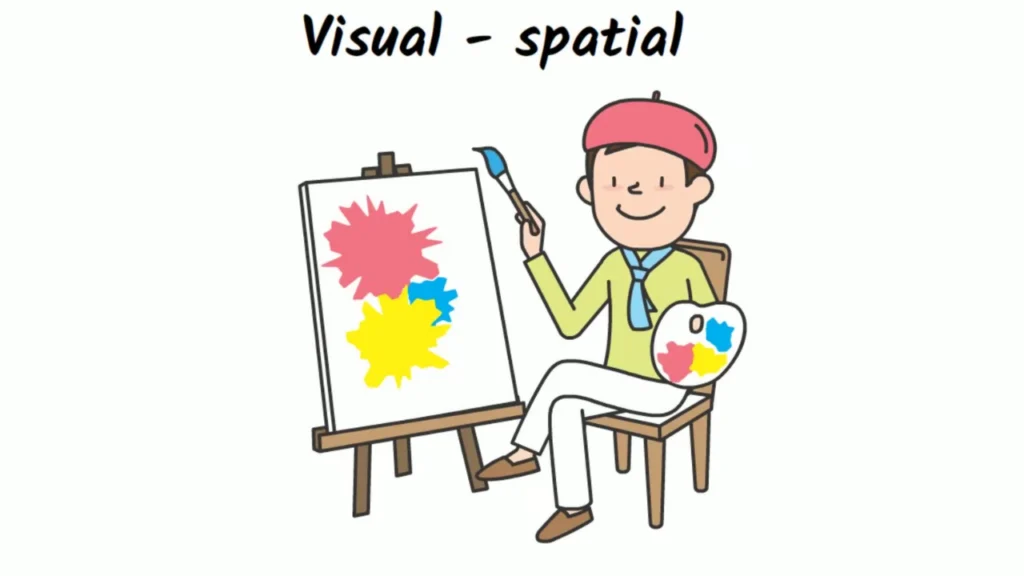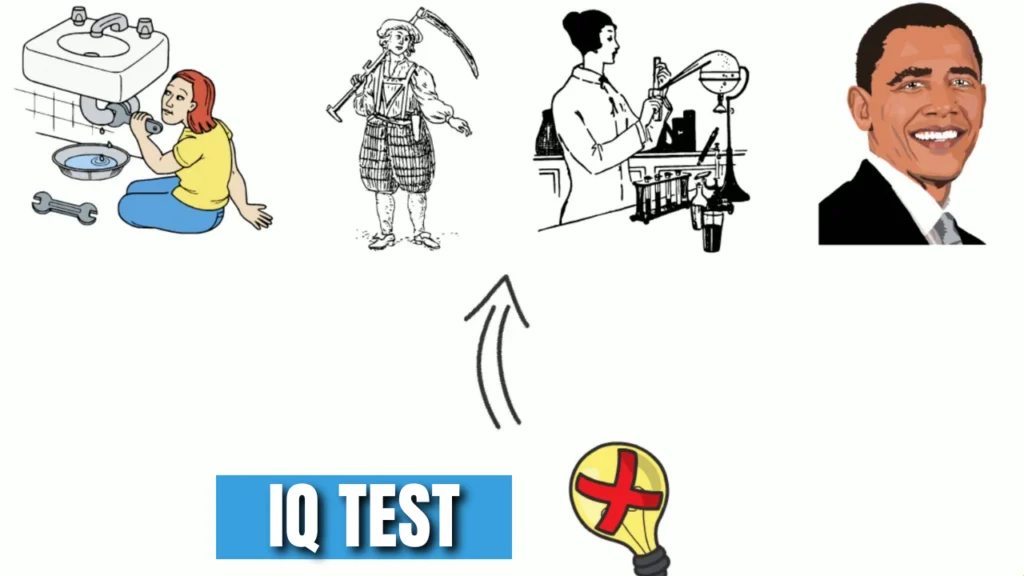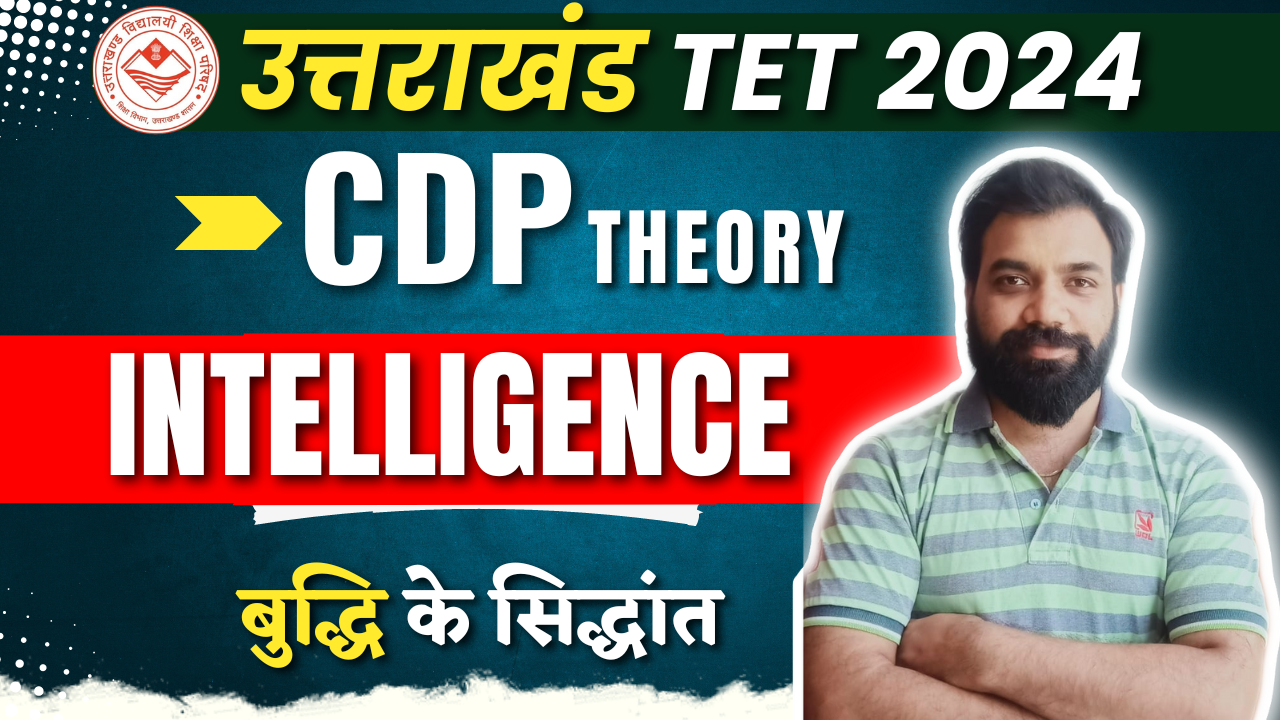Theory of Intelligence & Howard Gardner theory: बाल विकास एवं शिक्षण शास्त्र में अच्छे अंक प्राप्त करने के लिए पेडागोजी के इस महत्वपूर्ण टॉपिक को आज हम लेकर आए हैं जो आपके शिक्षक संबंधित सभी परीक्षाओं के लिए बहुत ही उपयोगी है । थ्योरी ऑफ़ इंटेलिजेंस और फॉरवर्ड गार्डनर थ्योरी (Theory of intelligence) के यह नोटिस आपके आगामी उत्तराखंड टेट (UTET 2024) की परीक्षा की तैयारी करने के लिए बेहद ही महत्वपूर्ण होंगे ।
Definition of Intelligence
Intelligence can be defined as the ability to learn from experience, solve problems, and adapt to new situations. It involves various cognitive processes such as reasoning, planning, abstract thinking, understanding complex ideas, and learning quickly. Intelligence is not just about knowledge but also about using that knowledge effectively in different contexts.
बुद्धिमत्ता को अनुभव से सीखने, समस्याओं को हल करने, और नए परिस्थितियों के साथ अनुकूलन करने की क्षमता के रूप में परिभाषित किया जा सकता है। इसमें विभिन्न संज्ञानात्मक प्रक्रियाएं शामिल होती हैं जैसे तर्क करना, योजना बनाना, अमूर्त विचार करना, जटिल विचारों को समझना, और जल्दी सीखना। बुद्धिमत्ता केवल ज्ञान के बारे में नहीं है, बल्कि उस ज्ञान का प्रभावी ढंग से विभिन्न संदर्भों में उपयोग करने के बारे में भी है।
Historical Background:
The concept of intelligence has evolved over time, with contributions from various psychologists:
Francis Galton (1822-1911): Galton was one of the pioneers in the study of intelligence. He introduced the concept of hereditary intelligence and attempted to measure it through various physical and sensory tests.
फ्रांसिस गैल्टन (1822-1911): गैल्टन बुद्धि के अध्ययन में अग्रदूतों में से एक थे। उन्होंने आनुवंशिक बुद्धि की अवधारणा पेश की और इसे मापने के लिए विभिन्न शारीरिक और संवेदी परीक्षणों का प्रयास किया।
Alfred Binet (1857-1911): Binet, along with Théodore Simon, developed the first practical intelligence test, known as the Binet-Simon scale, which was aimed at identifying children who needed special educational assistance.
अल्फ्रेड बिनेट (1857-1911): बिनेट ने थिओडोर साइमन के साथ मिलकर पहला व्यावहारिक बुद्धि परीक्षण विकसित किया, जिसे बिनेट-साइमन स्केल के रूप में जाना जाता है, जिसका उद्देश्य उन बच्चों की पहचान करना था जिन्हें विशेष शैक्षिक सहायता की आवश्यकता थी।
Charles Spearman (1863-1945): Spearman introduced the concept of the ‘g factor’ or general intelligence, suggesting that intelligence is a single, general ability.
चार्ल्स स्पीयरमैन (1863-1945): स्पीयरमैन ने ‘जी फैक्टर’ या सामान्य बुद्धि की अवधारणा पेश की, जिसमें सुझाव दिया गया कि बुद्धि एक एकल, सामान्य क्षमता है।
Howard Gardner: Proposed the theory of multiple intelligences, arguing that traditional IQ tests are limited and do not capture the full range of human intelligence.
हॉवर्ड गार्डनर: उन्होंने बहु-बुद्धि का सिद्धांत प्रस्तावित किया, जिसमें कहा गया कि पारंपरिक IQ परीक्षण सीमित हैं और मानव बुद्धि की पूरी श्रृंखला को नहीं पकड़ते हैं।
Theory of Intelligence
a. Spearman’s Two-Factor Theory: स्पीयरमैन का द्वि-घटक सिद्धांत
- General Intelligence (g): Spearman proposed that general intelligence (g) influences performance on all cognitive tasks.
- सामान्य बुद्धि (g): स्पीयरमैन ने प्रस्तावित किया कि सामान्य बुद्धि (g) सभी संज्ञानात्मक कार्यों पर प्रदर्शन को प्रभावित करती है।
- Specific Intelligence (s): Alongside g, individuals also have specific abilities (s) that are unique to particular tasks.
- विशिष्ट बुद्धि (s): g के साथ-साथ व्यक्तियों में विशिष्ट क्षमताएं (s) भी होती हैं जो विशिष्ट कार्यों के लिए अद्वितीय होती हैं।
b. Thurstone’s Primary Mental Abilities: थर्स्टोन की प्राथमिक मानसिक क्षमताएँ
- L.L. Thurstone proposed that intelligence is not a single general ability but rather a combination of seven primary mental abilities:
- एल.एल. थर्स्टोन ने प्रस्तावित किया कि बुद्धि एक एकल सामान्य क्षमता नहीं है, बल्कि सात प्राथमिक मानसिक क्षमताओं का संयोजन है:
- Verbal comprehension मौखिक समझ
- Word fluency शब्द प्रवाह
- Number facility संख्या क्षमता
- Spatial visualization स्थानिक कल्पना
- Associative memory सहयोगी स्मृति
- Perceptual speed बोधगम्यता की गति
- Reasoning तर्क
c. Gardner’s Theory of Multiple Intelligences: गार्डनर का बहु-बुद्धि सिद्धांत
- Howard Gardner proposed that intelligence is multifaceted and identified eight distinct types of intelligences:
- हॉवर्ड गार्डनर ने प्रस्तावित किया कि बुद्धि बहुआयामी है और उन्होंने आठ अलग-अलग प्रकार की बुद्धियों की पहचान की:
- Linguistic Intelligence: It refers to the ability to effectively use language, both written and spoken, to express oneself and understand others. People with high linguistic intelligence are typically skilled in reading, writing, storytelling, and memorizing words or phrases. They often excel in areas such as poetry, writing, public speaking, and learning languages. This form of intelligence is crucial for effective communication and can be seen in writers, lawyers, journalists, and teachers.
- Logical-Mathematical Intelligence: Logical-Mathematical Intelligence is another type of intelligence identified by Howard Gardner in his theory of multiple intelligences. This form of intelligence involves the ability to think logically, reason, identify patterns, and solve mathematical problems. Individuals with strong logical-mathematical intelligence are skilled at understanding abstract concepts, working with numbers, and analyzing problems systematically.
- Spatial Intelligence: Ability to visualize the world in 3D.
- Musical Intelligence: Skill in performing, composing, and appreciating musical patterns.

- Bodily-Kinesthetic Intelligence: Ability to use one’s body in skilled ways.
- Interpersonal Intelligence: Ability to understand and interact effectively with others.

- Intrapersonal Intelligence: Capacity to understand oneself.
- Naturalistic Intelligence: Ability to identify and distinguish among different types of plants, animals, and weather formations.
- भाषाई बुद्धिमत्ता: यह स्वयं को व्यक्त करने और दूसरों को समझने के लिए लिखित और मौखिक दोनों तरह की भाषा का प्रभावी ढंग से उपयोग करने की क्षमता को संदर्भित करता है।
- तार्किक-गणितीय बुद्धिमत्ता: तार्किक-गणितीय बुद्धिमत्ता एक अन्य प्रकार की बुद्धि है जिसे हॉवर्ड गार्डनर ने अपने बहु-बुद्धि सिद्धांत में पहचाना है। बुद्धि के इस रूप में तार्किक रूप से सोचने, तर्क करने, पैटर्न की पहचान करने और गणितीय समस्याओं को हल करने की क्षमता शामिल है।
- स्थानिक बुद्धिमत्ता: दुनिया को 3डी में देखने की क्षमता।
- म्यूजिकल इंटेलिजेंस: संगीत पैटर्न का प्रदर्शन, रचना और सराहना करने में कौशल।
- शारीरिक-गतिज बुद्धि: किसी के शरीर को कुशल तरीकों से उपयोग करने की क्षमता।
- पारस्परिक बुद्धिमत्ता: दूसरों को समझने और उनके साथ प्रभावी ढंग से बातचीत करने की क्षमता।
- अंतर्वैयक्तिक बुद्धिमत्ता: स्वयं को समझने की क्षमता।
- प्राकृतिक बुद्धि: विभिन्न प्रकार के पौधों, जानवरों और मौसम संरचनाओं के बीच पहचान और अंतर करने की क्षमता।

d. Sternberg’s Triarchic Theory of Intelligence: स्टर्नबर्ग का त्रियाक्षिक बुद्धि सिद्धांत
- Robert Sternberg proposed that intelligence is composed of three parts:
- Analytical Intelligence: Ability to analyze, judge, evaluate, compare, and contrast. विश्लेषणात्मक बुद्धि: विश्लेषण, न्याय, मूल्यांकन, तुलना और विरोधाभास करने की क्षमता।
- Creative Intelligence:
- Practical Intelligence:
e. Cattell-Horn-Carroll (CHC) Theory: कैटल-हॉर्न-कैरेल (CHC) सिद्धांत
- This is an integrated model of intelligence that includes:
- Fluid Intelligence (Gf): The ability to solve new problems, use logic in new situations, and identify patterns.
- तरल बुद्धि (Gf): नई समस्याओं को हल करने, नई परिस्थितियों में तर्क करने, और पैटर्न की पहचान करने की क्षमता।
- Crystallized Intelligence (Gc): The ability to use learned knowledge and experience.
- स्फटिक बुद्धि (Gc): सीखे गए ज्ञान और अनुभव का उपयोग करने की क्षमता।
- Broad Abilities: Several other abilities like memory, processing speed, and visual and auditory processing.
- व्यापक क्षमताएँ: स्मृति, प्रसंस्करण गति, और दृश्य और श्रवण प्रसंस्करण जैसी कई अन्य क्षमताएँ।
Read More- Inclusive Education & Disability | UTET 2024
Intelligence Testing बुद्धि परीक्षण:
- IQ (Intelligence Quotient):

- Intelligence Tests
- Stanford-Binet Intelligence Scale: Measures five factors of cognitive ability: fluid reasoning, knowledge, quantitative reasoning, visual-spatial processing, and working memory.
- स्टैनफोर्ड-बिनेट इंटेलिजेंस स्केल: संज्ञानात्मक क्षमता के पांच कारकों को मापता है: तरल तर्क, ज्ञान, मात्रात्मक तर्क, दृश्य-स्थानिक प्रसंस्करण, और कार्य स्मृति।
- Wechsler Adult Intelligence Scale (WAIS): Measures adult and adolescent intelligence.
- वेक्षलर वयस्क बुद्धि स्केल (WAIS): वयस्क और किशोर बुद्धि को मापता है।
- Wechsler Intelligence Scale for Children (WISC): Measures intelligence in children aged 6-16.
- वेक्षलर इंटेलिजेंस स्केल फॉर चिल्ड्रन (WISC): 6-16 वर्ष के बच्चों में बुद्धि को मापता है।
Application in Education: शिक्षा में अनुप्रयोग
- Understanding intelligence is crucial for educators as it helps in:
- Identifying individual differences: Teachers can tailor their teaching strategies according to the varying intelligence levels and types among students.
- व्यक्तिगत मतभेदों की पहचान करना: शिक्षक अपनी शिक्षण रणनीतियों को छात्रों में मौजूद विभिन्न बुद्धि स्तरों और प्रकारों के अनुसार तैयार कर सकते हैं।
- Special Education Needs: Identifying students who require additional support or advanced programs.
- विशेष शिक्षा की आवश्यकता: उन छात्रों की पहचान करना जो अतिरिक्त समर्थन या उन्नत कार्यक्रमों की आवश्यकता होती है।
- Differentiated Instruction: Planning and delivering instruction that is responsive to the diverse intelligences present in a classroom.
- विभेदित निर्देश: शिक्षण की योजना बनाना और वितरित करना जो कक्षा में मौजूद विभिन्न प्रकार की बुद्धियों के लिए उत्तरदायी हो।
- Assessment and Evaluation: Creating fair and comprehensive assessment strategies that accommodate different types of intelligences.
- मूल्यांकन और मूल्यांकन: न्यायपूर्ण और व्यापक मूल्यांकन रणनीतियों का निर्माण जो विभिन्न प्रकार की बुद्धियों को समायोजित करती हैं।
Criticisms of Intelligence Theories
- Cultural Bias: Traditional intelligence tests have been criticized for being culturally biased and not adequately representing the intelligence of individuals from diverse backgrounds.
- Narrow Scope: Some theories, like the ‘g factor,’ have been criticized for being too narrow and not capturing the full complexity of intelligence.
- Multiple Intelligences Theory: While popular in educational circles, some critics argue that Gardner’s theory lacks empirical support and that the intelligences he identified may simply be talents or skills rather than forms of intelligence.
Contemporary Views:
- Modern research on intelligence is increasingly focused on:
- Emotional Intelligence (EQ): The ability to recognize, understand, and manage our own emotions and the emotions of others.
- Social Intelligence: The ability to navigate social situations and maintain relationships.
- Artificial Intelligence (AI): Understanding how human intelligence can be mimicked and surpassed by machines.
- Neuroscience and Intelligence: Exploring the biological and neural underpinnings of intelligence.
Read More : Inclusive Education MCQ in Hindi | उत्तराखंड TET के लिए महत्वपूर्ण प्रश्न
